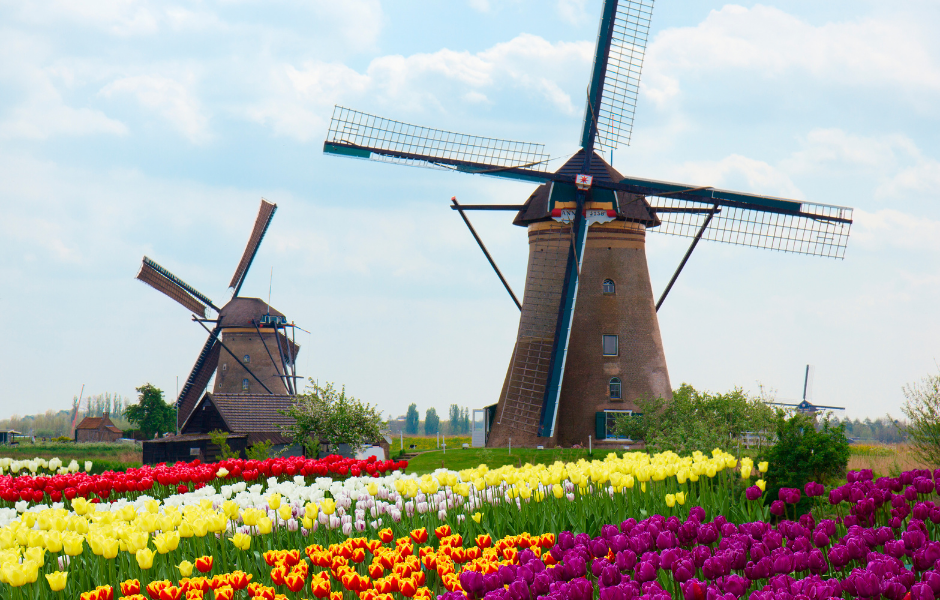
This children’s article, How do planes fly? A kids’ guide to the science of the skies, has been written for native English speakers and learners of English as a second or foreign language. It can help children build vocabulary, learn about the science of flight, and discover how huge machines like planes can soar through the air. Written by Mark Pulley, a teacher and writer who creates fun and informative news articles for English learners.
How do planes fly?
It might seem like magic, but planes stay in the air thanks to good old science. The main reason is something called lift, which is a force that pushes the plane up. When air moves quickly over the curved top of a wing and more slowly under the flat bottom, it creates lift, making the plane rise.
Another force is thrust, which comes from the engines. Thrust pushes the plane forward, while lift makes it go up. It’s not all down to thrust and lift, though; there are two other forces at play. Gravity pulls the plane down, and drag slows it down. Pilots know how to control all of these forces to keep the plane balanced and flying smoothly.
The importance of wings and engines
Wings are specially shaped to control airflow. The shape is called an airfoil, and it’s what helps create lift. Without this clever design, planes would never leave the ground.
Engines, whether propellers or jet turbines, give the plane the speed it needs. The faster the air moves over the wings, the stronger the lift. That’s why you feel a plane speeding up down the runway before it suddenly leaves the ground!
Staying in the air and steering
Once the plane is up, pilots use flaps and tail fins to steer. The tail keeps the plane stable so it doesn’t wobble around in the sky. Small wing parts, called ailerons and rudders, help it turn left or right, climb higher, or glide down.
Inside the cockpit, pilots keep an eye on their instruments to make sure everything is safe. When planes are high up in the sky, they are often flying on autopilot, where computers do much of the work. Pilots are needed most when taking off and landing.
Why flying changed the world
Planes have completely changed how humans live. What used to take months to get places by ship or weeks by train can now be done in just hours. People can travel the world, deliver goods, and even send help in emergencies faster than ever before.
Flying also inspires dreams. From the Wright brothers’ first flight in 1903 to today’s huge jumbo jets and space planes, humans have always looked to the skies. And who knows? Maybe one day you’ll be a pilot or design the next generation of flying machines!

Article vocabulary list
- Lift: The upward force that helps a plane rise.
- Thrust: The forward push from the engines.
- Gravity: The force that pulls objects down to Earth.
- Drag: The force that slows a plane down.
- Airfoil: The special shape of a wing that creates lift.
- Cockpit: The place where pilots sit and control the plane.
- Autopilot: A computer system that helps fly the plane.
- Jumbo jet: A very large passenger airplane.
Comprehension questions
Just click the plus (+) to see the answer
1. What is the name of the force that pushes a plane upwards?
A) Gravity
B) Lift
C) Drag
Answer: B) Lift
2. What do engines provide to make a plane move forward?
A) Thrust
B) Lift
C) Autopilot
Answer: A) Thrust
3. What part of the plane helps keep it stable in the air?
A) Cockpit
B) Tail
C) Ailerons
Answer: B) Tail
4. When did the Wright brothers make their first flight?
A) 1903
B) 1953
C) 1803
Answer: A) 1903
5. What is the special shape of a plane’s wing called?
A) Airfoil
B) Autopilot
C) Jumbo jet
Answer: A) Airfoil

Mark is a writer and EFL teacher from England with eight years’ experience. He’s passionate about travel, sport (especially football), animals, nature, and history, and enjoys helping children explore the world through language and learning.




